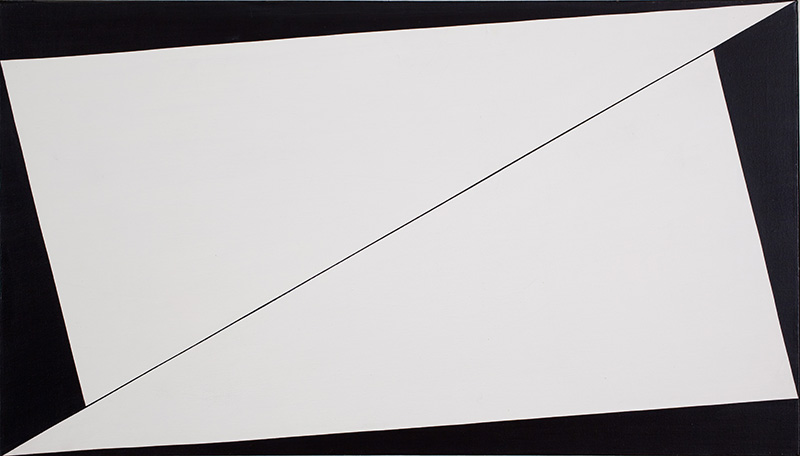ART CITIES:N.York-Carmen Herrera
 Carmen Herrera sold her first painting in 2004 at the age of 89, after painting full-time for more than 60 years. Now recognised as a pioneer of Geometric Abstraction and Latin American Modernism, her radiant geometric paintings are striking in their formal control. The influence of her architectural studies at the University of Havana is clear. From the beginning, Carmen Herrera’s personal path to abstraction has been characterized by order and simplicity. These qualities are evident both in her definition of forms and her use of strong color.
Carmen Herrera sold her first painting in 2004 at the age of 89, after painting full-time for more than 60 years. Now recognised as a pioneer of Geometric Abstraction and Latin American Modernism, her radiant geometric paintings are striking in their formal control. The influence of her architectural studies at the University of Havana is clear. From the beginning, Carmen Herrera’s personal path to abstraction has been characterized by order and simplicity. These qualities are evident both in her definition of forms and her use of strong color.
By Efi Michalarou
Photo: Whitney Museum Archive
Focusing on the years 1948 to 1978, the period during which Carmen Herrera developed her signature style, the exhibition “Carmen Herrera: Lines of Sight” features more 50 works, including paintings, 3-dimensional works, and works on paper. It begins with the formative period following World War II, when Herrera lived in Paris (1948-53) and experimented with different modes of Abstraction before establishing the visual language of Geometric Abstraction, moving towards cleaner lines and a reduced palette. Crucially, she also began using the edges and the frame as compositional elements. In the second section of the exhibition is on presentation 9 works from what Herrera considers her most important series, “Blanco y Verde” (1959–1971). These works illustrate the highly innovative way in which Herrera conceptualized her paintings as objects, using the physical structure of the canvas as a compositional tool and integrating the surrounding environment. With works dating from approximately 1962 to 1978, the final section illuminates Herrera’s continued experimentation with figure/ground relationships and highlights the architectural underpinnings of many of her compositions. This section includes four wooden sculptures, Herrera’s “estructuras” as well as her “Days of the Week”, a series of 7 vivid paintings. Born 30/5/15, in Havana, Carmen Herrera was educated in Havana and Paris, studying art, art history, and architecture. In 1939 she married Jesse Loewenthal, and moved to New York City, where she attended classes at the Art Students League. The period 1948-53 they lived in Paris, where she became associated the Salon des Réalités Nouvelles Group. Herrera exhibited her work with them regularly. Herrera’s hard-edged canvases emerged at the same time that Ellsworth Kelly, whose time in France overlapped with Herrera’s, began producing his own abstractions and around the same time that Frank Stella began producing his “Black Paintings”. Herrera’s ascetic compositions, which prefigured the development of Minimalism by almost a decade, did not find a warm reception when she returned to New York in 1954, a time when Abstract Expressionism still reigned supreme. As both a woman and an immigrant, Herrera faced significant discrimination in the art world, yet she persisted, and continued to paint for the next 60 years, only rarely exhibiting her work publicly. Today, at the age of 101, Herrera continues to work almost every day in her studio, and her oeuvre demonstrates a disciplined but highly sophisticated exploration of color and form.
Info: Organizer: Dana Miller, Whitney Museum of American Art, 99 Gansevoort Street, New York, Duration: 16/9/16-2/1/17, Days & Hours: Mon, Wed-Thu & Sun 10:30-18:00, Fri-Sat 10:30-22:00, http://whitney.org




